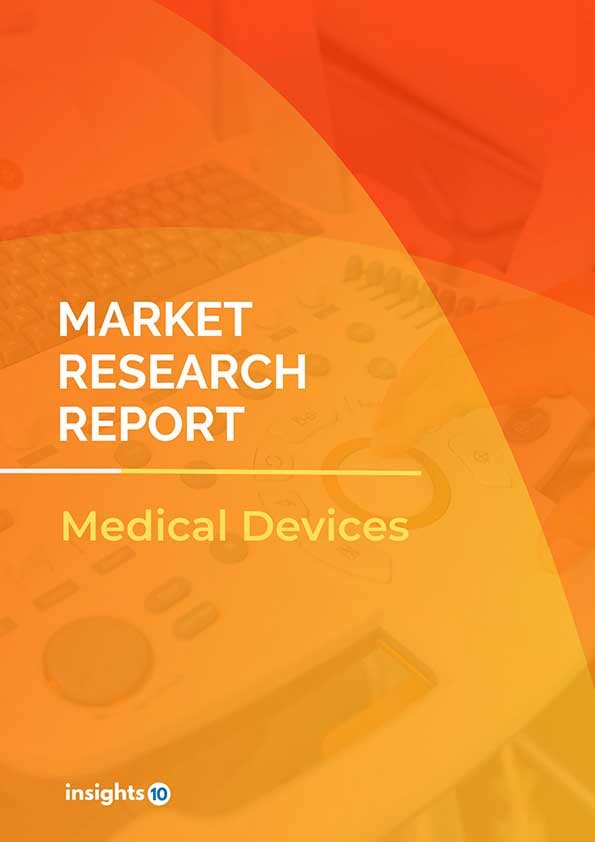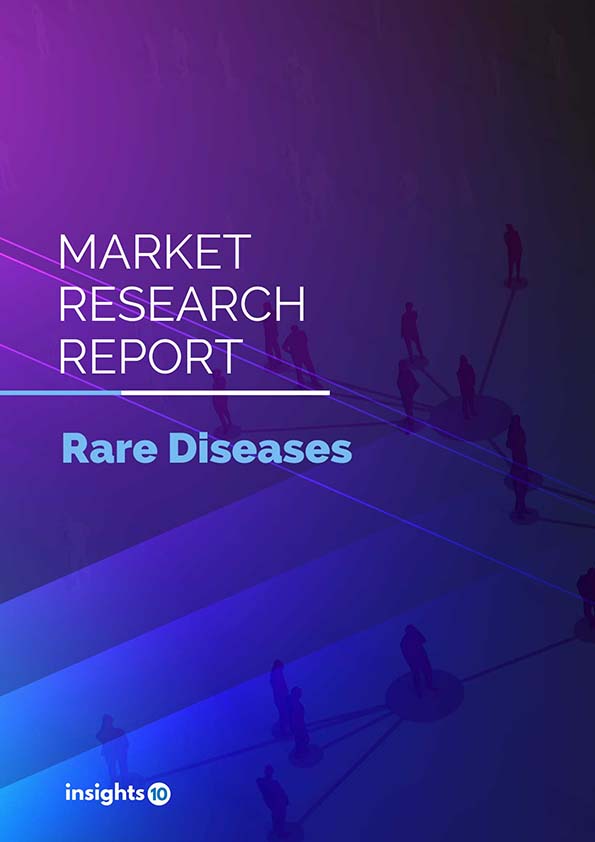UAE 3D Printing Medical Devices Market Analysis
UAE 3D printing medical device Market is expected to witness growth from $15 Mn in 2022 to $53 Mn in 2030 with a CAGR of 17.30% for the forecasted year 2022-30. Increasing demand for customized medical devices in the United Arab Emirates, technological advancements, rising healthcare spending, and rising awareness of 3D printing technology are some of the major market growth factors for makers in this sector. The market is segmented by product segmented by application, technology, and end user. Some key players in this market include Bin Ali Medical Supplies, Immensa Technology Labs, Proto21, GE Healthcare, Stryker, and Medtronic.
Buy Now

UAE 3D Printing Medical Devices Market Executive Summary
The UAE 3D printing medical devices market size is at around $15 Mn in 2022 and is projected to reach $53 Mn in 2030, exhibiting a CAGR of 17.30% during the forecast period. The UAE's current per-individual healthcare expenditures increased from $2,843.78 in 2018 to $2,996.36 in 2019. 5.5% of the UAE's Economy will be spent on health in 2021. Male life expectancy in the UAE is 78.21 years, while female life expectancy is 80.99 years in 2022.
The UAE has an outstanding healthcare system, with numerous top-notch hospitals and clinics providing state-of-the-art medical services like 3D imaging. The UAE government has recently made significant investments in the healthcare sector, including the use of cutting-edge technology like 3D imagery. As a consequence, the market for 3D-printed medical devices has grown in the nation, and more patients now have access to premium medical imaging services.
Some of the most common uses of 3D imaging in the UAE include:
- Diagnostic imaging,
- Interventional radiology, and
- Surgical planning
Medical device producers can rapidly prototype new products due to 3D printing, which can hasten the development process and cut costs. By more effectively making medical devices, 3D printing can contribute to waste reduction. Contrary to conventional manufacturing processes, which can result in a large quantity of waste material, 3D printing only uses the precise amount of material required to build the object. Anatomy models of patients can be produced using 3D printing, which can assist doctors in organizing difficult operations. This can lessen the possibility of problems during the procedure.

Market Dynamics
Market Growth Drivers
The UAE 3D Printing Medical devices market is anticipated to expand considerably. Increasing demand for customized medical devices in the United Arab Emirates, technological advancements, rising healthcare spending, and rising awareness of 3D printing technology are some of the major market growth factors for makers in this sector. The development of new and improved 3D printing materials and printers, which can create more intricate and complicated medical devices, is a result of the advancement of 3D printing technology. Manufacturers can take advantage of these developments to make medical devices that are more inventive and efficient. The UAE government has made significant expenditures in the medical field and passed legislation to promote the use of cutting-edge 3D-printed medical devices. This has created an advantageous environment for the country's market for 3D-printed medical devices to grow. The demand for 3D Printing Medical devices is increasing as chronic diseases like cancer, cardiovascular disease, and diabetes are becoming more prevalent.
Market Restraints
The regulatory environment for 3D Printing Medical devices in the UAE is still developing, which may cause manufacturers who want to sell their 3D printed medical devices to face uncertainty and delays. The high infrastructure and equipment costs associated with 3D printing technology can prevent some producers from using it. The cost of 3D printing technology can be high, especially for small-scale producers. Competing with bigger manufacturers who have the resources to invest in this technology may be difficult as a result.
Competitive Landscape
Key Players
- Bin Ali Medical Supplies (UAE)
- Immensa Technology Labs (UAE)
- Proto21 (UAE)
- Medtronic
- Boston Scientific
- GE Healthcare
- Stryker
Recent Developments
October 2021: The Dubai Health Authority (DHA) and Immensa Technology Labs signed a Memorandum of Understanding (MoU) in 2021 to work together on 3D printing in the medical field. The objective of the MoU is to investigate the possibilities of 3D printing in the healthcare industry, specifically in the production of medical devices.
Healthcare Policies and Regulatory Landscape
The UAE government's primary policy is to encourage the use of cutting-edge medical technologies, like 3D printing, to improve patient treatment. The Dubai 3D Printing Strategy, which aims to make Dubai a global leader in 3D printing by 2030, is one of several projects the UAE Ministry of Health and Prevention (MOHAP) has developed to promote the use of 3D printing in healthcare. For 3D-printed medical devices, the UAE has a thorough regulatory structure. Medical 3D printing is governed in the UAE by the Emirates Council for Standardization and Metrology (ESMA). Devices that are 3D made must adhere to its rules. Manufacturers must adhere to the technical requirements specified in the Gulf Cooperation Council (GCC) Medical Device Regulatory Framework in order to file 3D-printed medical devices in the UAE. This involves offering proof of the device's efficacy and safety, as well as that it complies with all pertinent rules and regulations.
1. Executive Summary
1.1 Device Overview
1.2 Global Scenario
1.3 Country Overview
1.4 Healthcare Scenario in Country
1.5 Regulatory Landscape for Medical Device
1.6 Health Insurance Coverage in Country
1.7 Type of Medical Device
1.8 Recent Developments in the Country
2. Market Size and Forecasting
2.1 Market Size (With Excel and Methodology)
2.2 Market Segmentation (Check all Segments in Segmentation Section)
3. Market Dynamics
3.1 Market Drivers
3.2 Market Restraints
4. Competitive Landscape
4.1 Major Market Share
4.2 Key Company Profile (Check all Companies in the Summary Section)
4.2.1 Company
4.2.1.1 Overview
4.2.1.2 Product Applications and Services
4.2.1.3 Recent Developments
4.2.1.4 Partnerships Ecosystem
4.2.1.5 Financials (Based on Availability)
5. Reimbursement Scenario
5.1 Reimbursement Regulation
5.2 Reimbursement Process for Diagnosis
5.3 Reimbursement Process for Treatment
6. Methodology and Scope
UAE 3D Printing Medical Devices Market Segmentation
By Component
The UAE market is divided into three categories based on the component: equipment, materials, and software & services. End customers frequently employ software and services for designing and processing control of 3D-printed medical devices, particularly for bespoke items. The cost-effectiveness, utility, uniformity, and precision given by services for medical device 3D printing, together with a rise in demand for personalized 3D printed medical equipment among hospitals and surgical centers, are driving the market demand for software & surgical guides.
- Equipment
- 3D Printers
- 3D Bioprinters
- Materials
- Plastics
- Thermoplastics
- Photopolymers
- Metals and Metal Alloys
- Biomaterials
- Ceramics
- Paper
- Wax
- Other Materials
- Services & Software
By Application
The UAE market is divided into surgical guides, surgical tools, tissue-engineered goods, hearing aids, wearable medical devices/implantable medical devices, standard prostheses and implants, custom prosthetics and implants, and other medical devices based on the application. Due to the widespread adoption of 3D printing technology in the production of prosthetics and implants, the increased availability of high-quality biomaterials and ceramics for 3D printing, and ongoing industry investment in the development of novel 3D printers, the custom prosthetics and implants segment is expected to hold a larger share of the market in 2022.
- Surgical Guides
- Dental Guides
- Craniomaxillofacial Guides
- Orthopedic Guides
- Spinal Guides
- Surgical Instruments
- Surgical Fasteners
- Scalpels
- Retractors
- Standard Prosthetics & Implants
- Orthopedic Implants
- Dental Prosthetics & Implants
- Craniomaxillofacial Implants
- Bone & Cartilage Scaffolds
- Ligament & Tendon Scaffolds
- Custom Prosthetics & Implants
- Tissue-engineered Products
- Hearing Aids
- Wearable Medical Devices
- Other Applications
By Technology
According to technology, the global market has been divided into three categories: three-dimensional printing (3DP) or adhesion bonding; electron beam melting (EBM); laser beam melting (LBM); photopolymerization; droplet deposition or extrusion-based technologies; and other technologies. The laser beam melting (LBM) segment is anticipated to hold the greatest market share in 2022, in large part due to the growing use of this technology in the dental sector and for the production of implants for minimally invasive surgery.
- Laser Beam Melting
- Direct Metal Laser Sintering
- Selective Laser Sintering
- Selective Laser Melting
- LaserCUSING
- Photopolymerization
- Digital Light Processing
- Stereolithography
- Two-photon Polymerization
- PolyJet 3D Printing
- Fused Deposition Modeling
- Multiphase Jet Solidification
- Low-temperature Deposition Manufacturing
- Microextrusion Bioprinting
- Droplet Deposition/Extrusion-based Technologies
- Electron Beam Melting
- Three-dimensional Printing/Adhesion Bonding/Binder Jetting
- Other Technologies
By End User
The UAE market has been divided into hospitals and surgical facilities, dental and orthopedic clinics, academic institutions and research labs, pharma-biotech and medical device firms, and clinical research organizations based on end users. In 2022, hospitals and surgical centers are anticipated to hold the greatest market share. The high proportion of this market may be due to the ongoing expansion of internal 3D printing capabilities, the expansion of existing 3D printing laboratories, the rising affordability of 3D printing services, and the quick uptake of cutting-edge technology by hospitals in developed markets.
- Hospitals & Surgical Centers
- Dental & Orthopedic Clinics
- Academic Institutions & Research Laboratories
- Pharma-Biotech & Medical Device Companies
- Clinical Research Organizations
Insights10 will provide you with the reports within 10 key parameters which are:
- Market Overview
- Market Growth Drivers & Restraints
- Epidemiology of Disease Type
- Market Segmentation
- Market Share
- Competitive Landscape
- Key Company Profiles
- Healthcare Policies & Regulatory Framework
- Reimbursement Scenario
- Factors Driving Future Growth
Based on our many years of experience, we believe that these are the parameters that are critical to decision-making for business stakeholders. Our focused approach to developing reports focused on 10 key parameters, enabled us to arrive at the name “Insights10”.

Stage I: Market Data Collection
Primary Interviews: We have developed a network of experts, freelancers, and researchers across countries through which we engage with local experts to gather key data points and assumptions about each market. We also engage regularly with some of the best market research agencies such as Atheneum, GuidePoint, GLG, etc. to conduct surveys and interviews, and build intelligence. We have language translators as a part of our team, who between them can cover 30+ languages allowing us to extract better local insights.
Secondary Data Collection: We have developed strong expertise and experience in secondary data collection methods for developing unique data sets and research material. We gather data from multiple reliable sources to maintain a high level of accuracy and consistency. The market data is analyzed and forecasted using appropriate statistical and coherent models. The report offers an overall analysis of the market size, growth, and market share as well as a segment-level analysis of the specific market. Our report includes precise, to-the-point information related to the overall market, competition, growth drivers, challenges, regulatory updates, and competition.
Data Sources: We have access to multiple highly reliable free and subscription data sources. We have many years of experience to understand which sources are more dependable for what and which to prefer for the reliable and latest information. The key sources of information include the following, but are not limited to:

Stage II: Market Data Analysis and Statistical Model
Market Trends: We generally look at macro parameters and micro indicators. The macro parameters include changes in government policies, demand and supply of the market, government intervention programs, and major market share. The micro indicators are GDP growth, market size, market volume, etc. We also understand nuances specific to each country like the US, Canada, India, Germany, etc., and have worked across 60+ countries and hence not only understand global trends but how these differ by country, how payment models, market structure, cultural parameters, etc. differ in each country.
Market Sizing and Analysis: Our expert data analytics team has created various market forecast models by employing the top-down approach i.e. starting with the large overall market and segmenting different areas and the bottom-up approach i.e. starting with population and epidemiology and rolling up based on spend, etc., estimating the size of the market, and distributing among the geographic and/or product segments.
The top-down approach is mainly used for new product forecasting and the bottom-up approach is used for demand estimation of any product for different countries summed up to form the total market. We are able to round off insights and build stronger forecasts because we always do both these methods and triangulate the final numbers.
The study on the market covers the analysis of the leading geographies such as Asia-Pacific, Africa, Europe, Middle East, North America, and Latin America for the period of 2022 to 2030. The qualitative analysis covers the industry landscape and trends, market opportunities, competitive landscape, and policy and regulatory scenario, and the quantitative analysis covers different market estimates and forecasts.
Data Triangulation & Validation:
Data triangulation of various sources and results of the research are carried out by benchmarking with reliable sources such as industry statistics, statistical databases, and company-level averages, etc.
We make sure to finalize the numbers in alignment with the market research. Firstly, our internal experts ensure thorough validation and checking to ensure accurate and precise analysis and then validation is also done using a multiple-data analysis model. Two-level validation is done and entails the finalization of the report scope and the way of representation pattern.
(1).png)
Stage III: Interpretation and Presentation
Analysis & Interpretation: The information gathered is then analyzed and synthesized. The second series of interviews are done if necessary to check and validate. The future opportunities are analyzed by understanding product commercialization and many other factors. It also comprises the analysis of data discrepancies observed across various data sources. Information procured from secondary and primary results is then, interpreted by considering the following parameters: (a partial list)
- Establishing market drivers and trends
- Analyzing the regulatory landscape to understand future growth
- Market Segment based analysis to obtain revenue/volume
- Analyzing current needs and determining penetration to estimate the market
Insights: Our reports deliver actionable insights backed with supporting facts and figures to assist you in achieving exemplary growth. Our in-depth analyses are interspersed with relevant insights and statistics to offer an executive-level view of a given market. The description helps in correlating many minor factors affecting the market and their impact on the different segments within the market.
Data curated from the analysis and interpretation are drawn to portray all in one consolidated report.
Presentation & Reporting: The market research report is presented in different forms such as charts by using a scientific approach for easy understanding. Historic, current, and future analysis is provided for each market in terms of both value and volume. The size of the market is interpreted in the US Dollar value and the respective unit, based on the product, for volume consumption.
The foreign exchange rates are calculated on the respective dates and for the respective regions covered in the study.
To request a free sample copy of this report, please complete the form below.
We value your inquiry and offer free customization with every report to fulfil your exact research needs.
This report addresses
- Intelligent insights to take informed business decisions
- Qualitative, acute and result oriented market analysis
- Market size and forecasts from 2022 to 2030
- Opportunities for expansion and in-depth market analysis
- Segmentation and regional revenue forecasts
- Analysis of the market share and competitive landscape
- Strategic Recommendations to chart future course of action
- Comprehensive Market Research Report in PDF and PPT formats
Need more?
- Ask our analyst how this study was put together to learn more
- Discuss additional requirements as part of the free customisation
- Add more countries or regions to the scope
- Get answers to specific business questions
- Develop the business case to launch the product
- Find out how this report may influence your business revenue




